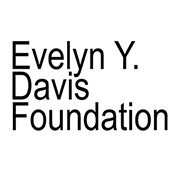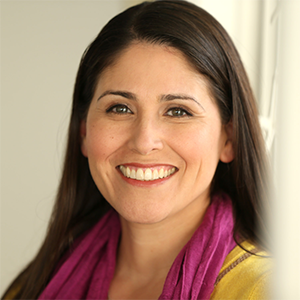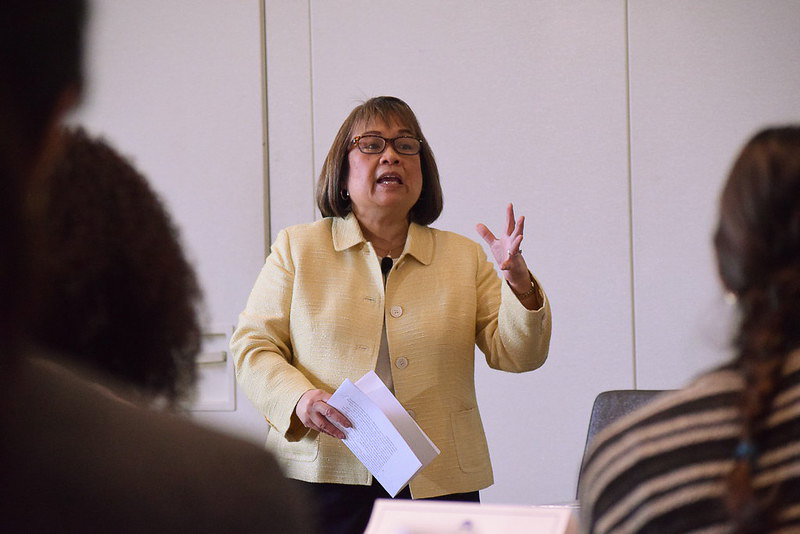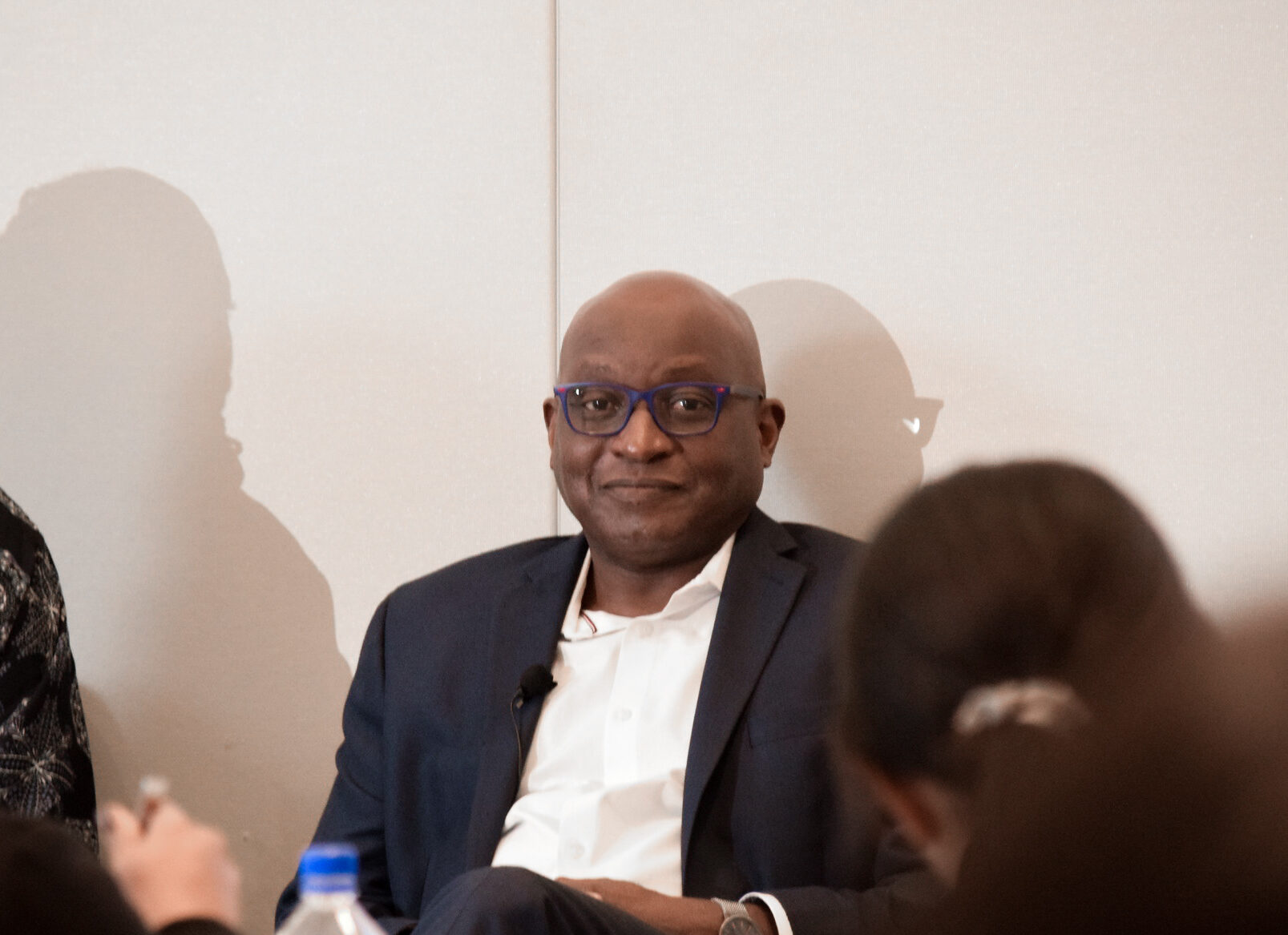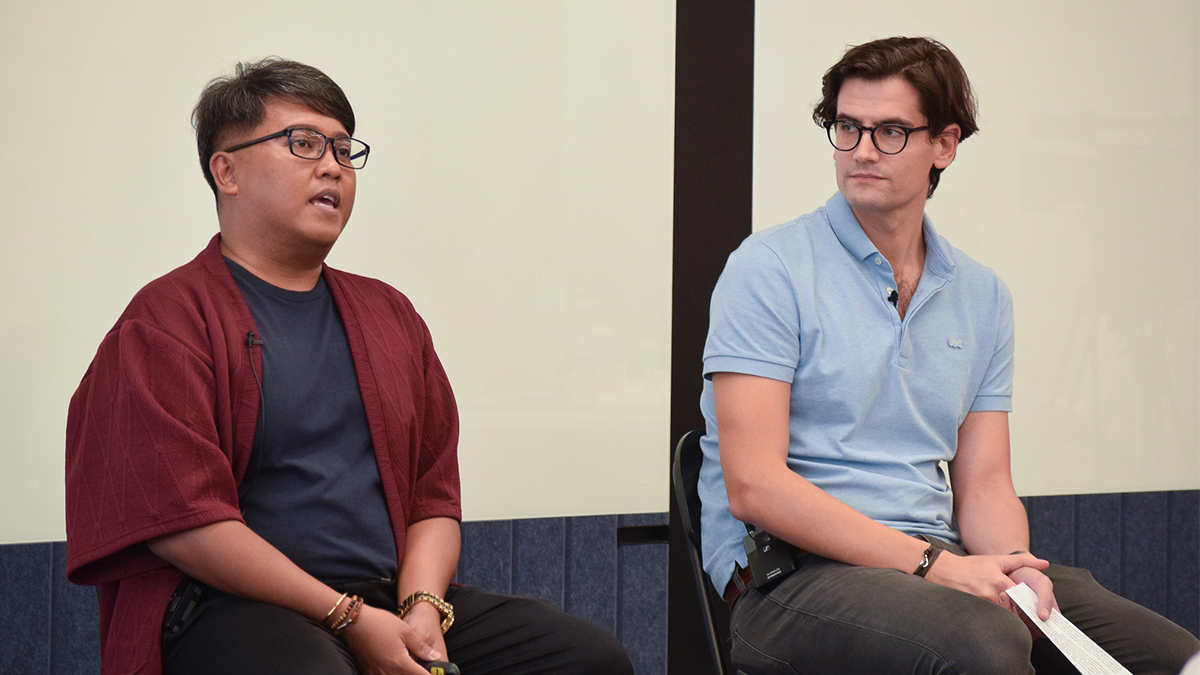As the National Association of Hispanic Journalists approaches its 40th year, there’s a lot a stake. Even amid increasing newsroom layoffs, lack of representation in the top ranks and industry-wide struggles, NAHJ still aims to prioritize coverage for historically-marginalized communities. Yvette Cabrera, the president of NAHJ, said the organization has bolstered its five-year plan to advocate for journalists of color. “Now more than ever, we see the need to speak up on behalf of our journalists,” she said. Cabrera shared some of NAHJ’s goals and accomplishments with NPF’s Widening the Pipeline fellows. [Transcript | Video]
5 takeaways:
➀ Journalists need their rights protected, too. As NAHJ’s five-year strategy was being developed, Cabrera said members made their priorities clear. Journalists who were covering protests and marches after the killing of George Floyd reported being arrested and otherwise barred from doing their jobs.
So a coalition of organizations, including NAHJ, SPJLA, NABJLA and the LA Press Club came together to explore their options. As for NAHJ, “We were meeting with law enforcement officials expressing our concern,” Cabrera said. NAHJ, with the help of the LA Press Club, compiled video clips about reporters who were being detained, as well as graphic footage showing journalists being injured. “We would issue statements when our members were being either arrested or detained or having their equipment taken from them by police officers.” Coincidentally, Cabrera said there was proposed legislation in the California state legislature to clarify the rights of journalists to be in spaces such as protests and marches.
Several videos were produced to raise awareness, and the law ended up being passed. “Our work continues as a coalition,” Cabrera said. “We are working with the LAPD to try to ensure that officers are trained on the new law, that they understand it, that journalists understand their rights.
➁ Although representation in media has improved, it is far from extensive. Feature stories on marginalized communities may have increased, but representation should go beyond features, Cabrera said. “It’s great to see human-driven narrative feature stories, but really what our communities have been asking for is the type of coverage that changes their lives,” she said. Stories that directly impact communities of color, like environmental hazards that affect marginalized communities, still need to be told and elevated. “I saw it as my job to try to find those answers,” Cabrera said.
➂ Many Hispanic high-school students miss out on learning the basic tenets of journalism. The pipeline to newsroom leadership often begins at a high school newspaper. But in many low-income communities of color, those kinds of programs are the first to be cut. “If there are no journalism programs in their high schools, they’re not being exposed to the possibility of pursuing a career in journalism,” Cabrera said. “We try through NAHJ to provide those types of workshops. In fact, we just had two student summits on both coasts, as well at schools like USC and Columbia, to give students access to the type of training that they may not be able to afford to get because they can’t travel to our national conferences.”
➃ Audience drives coverage. “Good journalism is not just a matter of translating stories from one audience to another,” Cabrera said. Outlets like Al Día, which explicitly catered to Hispanic audiences, give stories the full depth their focus audiences want. For instance, mainstream news outlets may cover immigration on a surface level. “The take and approach are going to be different, and our concern is that it’s going to be lost,” Cabrera said. She said NAHJ “will continue to advocate” for journalists pitching stories specific to Spanish-speaking audiences. She said outlets like Al Día are popular within their niches because audiences feel like they have a space they can go to for the information they need.
➄ Pick your battles. “It’s impossible to be everywhere at once,” Cabrera said. “Given everything that we have on our plates as journalists, I would say you should be driven by how you can grow as a journalist, but also what drives you in terms of your passions.” Journalists should consider prioritizing local chapters of organizations they are interested in. “At the local level, you can get more out of these organizations if they have robust chapters,” Cabrera said. Fees to register with local chapters are often cheaper than registration fees for national organizations.
Journalists should also consider combining organizations they are interested in with reporting jobs. “Sometimes a conference, based on where it’s at, may be connected to something you’re reporting on,” Cabrera said. “And you could do two things at once, attending the conference, reporting on a topic at the same time.”
The Widening the Pipeline Fellowship is sponsored by the Evelyn Y. Davis Foundation, Bayer, J&J and Lenovo. NPF is solely responsible for the content.

